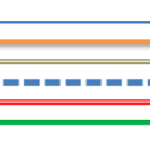

What should the E in eLearning stand for? Originally it stood for Electronic, which shows how long the term has been around. Perhaps it’s for this reason there remain preconceptions that can limit its use in education; for example, eLearning software is complicated. Teachers haven’t time to waste working out how to use it, they want something that’s simple to use and is cost effective. Reasons that led me to nimble two years ago.
I want to present three more E words that can challenge preconceptions of how we might use eLearning in education, based on innovative ideas developed by teachers who also use nimble.
Enrichment
We need learning materials that expand the student’s world and broadens their minds. How can eLearning help to enrich students’ experiences?
- Courses (with introductions, middles and ends + assessments) that deliver information and knowledge which can’t be covered in the classroom. Assessment will indicate the student’s level of understanding and if you export it to Moodle or your VLE, you can monitor how long they spent on it and when!
- Research activities that provide material to inspire further exploration on topics you haven’t time to cover in the lesson/scheme of work
- Support for assignments where you make available documentation in PDF format, URLs to relevant websites, video and audio links – which students can access in their own time as well as in the classroom. The use of survey questions helps students to reflect on this support
- Image or video libraries where you include visual stimuli to analyse; such as historical source material, art work from famous artists, stills from films in English and Media courses.
Extension
eLearning offers effective personalisation that enhances progress. When assignments have been completed, eLearning can extend the student’s knowledge, particularly where they need to apply what they’ve learned. Such as:
- A “menu” of course options for 15 minute activities that involve scenarios which require students to apply their new knowledge to a new context (such as enterprise activities or moral/social situations)
- Address employability by exploring new knowledge in a vocational perspective – how is that new skill relevant in the workplace? Why do employers want people with this knowledge? What personal qualities are you developing in this assignment?
- Materials which are ‘case studies’ where new knowledge is applied to the situation outlined
- Challenging scenarios that encourage students to question new knowledge – ‘why does it work this way?’, ‘how has this situation been allowed to develop?’ etc.
Enablement
Because eLearning is cloud-based it can be accessed anywhere, it overcomes many barriers students may provide (known or otherwise), such as:
- Learning materials for anyone who is absent – rather than set work which isn’t too complicated because you’re not there to give support, eLearning courses can be completed and assessed without the teacher
- Offer second or third chances to understand – some students may not immediately grasp the topic, an eLearning course ensures they can revisit it, do quizzes and assessments to help them improve their understanding, whilst developing their independence
- Alternate methodologies – perhaps the method used to teach a topic didn’t fit with how the student learns best? This approach offers personalisation. For instance, there are some students on the autistic spectrum who will struggle to learn in group settings but will perform better by working on the course independently (as an addition, after the group work if need be)
- 24/7 learning allows students to work when it’s best for them, this includes homework and coursework obviously but you can enable flipped classroom approaches this way too.
These are just a few suggestions. My point is a simple one – teachers are hardworking folk with limited time. eLearning offers enormous potential to engage students, to personalise the learning process and enrich lives in the process; yet without taking up a lot of valuable time. We just need to avoid the outdated preconceptions of eLearning and consider how they can help instead.
[Source:- EDtechnology]




